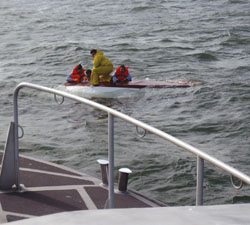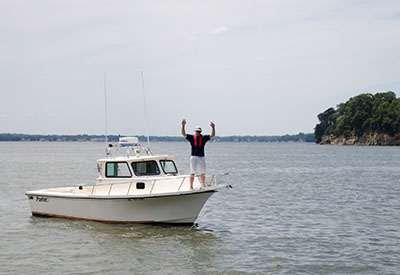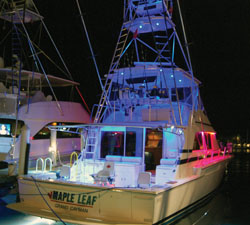Surviving a Capsizing

Capsizings resulted in many recreational boating deaths and injuries in 2010. Practice good seamanship to reduce your risk of capsizing, but if it happens know what to do to ensure that everyone on board gets back safely.
If you and your passengers are not wearing life jackets when the boat capsized, try to retrieve any equipment or gear, such as coolers or seat cushions, and improvise flotation. Never attempt to re-enter a capsized vessel. Then consider the most appropriate means to summon help.
As a boat operator, the safety of those on board is your first priority.
Stay with the boat. Never swim away from an upturned boat unless it is heading directly toward a hazard. Most trailer-sized boats will stay afloat even when flooded or turned bottom up.
Take a headcount and, if possible, signal for rescue.
If the boat is small enough, try to right the boat and bail it out.
If you can’t right it, hang onto it. Try to get as much of your body out of the water as possible and onto the hull. Out of the water you will lose less body heat and be less susceptible to hypothermia.
Leave your clothes and shoes on. Contrary to myth, shoes or waders filled with water have no effect on your ability to stay afloat in the water. Plus they conserve body heat.
If you are wearing a life jacket, draw your arms and legs up to your chest to conserve body heat. If you’re not wearing a life jacket, float on your back, conserving energy and body heat by moving arms and legs only when you must.
When the rescue boat arrives, let it approach you; avoid the stern (propeller) and the bow.
If thrown a line, wrap it around your chest and under your arms and secure with a knot. Search and rescue personnel will instruct you from there.
If you boat far from shore, consider purchasing an Emergency Position Indicating Radio Beacon (EPIRB). These devices – many of them equipped with automatic releases and an internal GPS – can alert rescue personnel to your emergency and provide your precise location.
But remember, even if you don’t have an EPIRB on board, staying with the boat can help the Coast Guard find you using the Search and Rescue Optimal Planning System (SAROPS), advanced computer technology that takes into account weather conditions, patterns of currents, your vessel’s departure point (assuming you’ve left a float plan with someone ashore) and other available information to identify locations where you are most likely to be. This is especially important at the beginning of a search in those critical first few hours.
Reprinted with permission from the US Coast Guard.





























